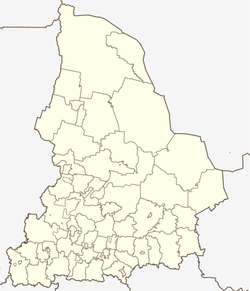
Karta Rossii Shp
Fizicheskaya karta Rossii. Federativnoe ustroystvo RF: Author: 898: Books - Amazon.ca. Karta Rossii [Author] on Amazon.com. *FREE* shipping on qualifying offers. Russian Book. Publisher: Ast. Cover: Paperback.
Contents • • • • • • • • • • • • • • • • • • • • • • • • Coat of arms [ ] The arms of the city display the in the act of defeating the Devil. Legend states that this victory took place near where the city stands, hence its name, and that Michael still stands watch over the city to prevent the Devil's return. History [ ] Early history [ ] knew the area around Arkhangelsk as. Told circa 890 of his travels in an area by a river and the White Sea with many buildings. This was probably the place later known as Arkhangelsk.
[ ] According to, Vikings led by raided this area in 1027. In 1989, an unusually impressive silver treasure was found by local farm workers by the mouth of Dvina, right next to present-day Arkhangelsk. Atec casey owners manual. It was probably buried in the beginning of the 12th century, and contained articles that may have been up to two hundred years old at that time. Most of the findings comprised a total of 1.6 kilograms (3.5 lb) of silver, largely in the form of coins. Jewelry and pieces of jewelry come from Russia or neighboring areas. The majority of the coins were German, but the hoard also included a smaller number of, English,, Hungarian, Danish, Swedish and Norwegian coins. It is hard to place this find historically until further research is completed.
There are at least two possible interpretations. It may be a treasure belonging to the society outlined by the Norse source material. Generally such finds, whether from, the area, or Russia, are closely tied to well-established agricultural societies with considerable trade activity. Alternatively, like the Russian scientists [ ] who published the find in 1992, one may see it as evidence of a stronger case of Russian colonization than previously thought. Novgorodians arrive [ ] In the 12th century, the established the Archangel Michael Monastery (named after ) in the estuary of the. The main trade center of the area at that time was, located 75 kilometers (47 mi) southeast of Arkhangelsk, up the Dvina River, about 10 kilometers (6.2 mi) downstream from where the Pinega River flows into the Dvina. Written sources indicate that Kholmogory existed early in the 12th century, but there is no archeological material to illuminate the early history of the town.
It is not known whether the origin of this settlement was Russian, or if it goes back to pre-Russian times. In the center of the small town (or Gorodok) that is there today is a large mound of building remains and river sand, but it has not been archeologically excavated. Norwegian-Russian conflict [ ]. Location of Arkhangelsk in northwestern Russia The area of Arkhangelsk came to be important in the rivalry between Norwegian and Russian interests in the northern areas. From Novgorod, the spectrum of Russian interest was extended far north to the in the 12th century. However, here Norway enforced taxes and rights to the fur trade.

A compromise agreement entered in 1251 was soon broken. [ ] [ ] In 1411, Yakov Stepanovich from Novgorod went to attack. This was the beginning of a series of clashes. In 1419, Norwegian ships with five hundred soldiers entered the. The 'Murmaners', as the Norwegians were called (cf. ), plundered many Russian settlements along the coast, among them the Archangel Michael Monastery. Novgorod managed to drive the Norwegians back.
However, in 1478 the area was taken over by and passed to the with the rest of the. Trade with England, Scotland, and the Netherlands [ ] Three English ships set out to find the in 1553; two disappeared, and one ended up in the White Sea, eventually coming across the area of Arkhangelsk. Found out about this, and brokered a trade agreement with the ship's captain,.
Trade privileges were granted to English merchants in 1555, leading to the founding of the, which began sending ships annually into the estuary of the Northern Dvina. Dutch merchants also started bringing their ships into the White Sea from the 1560s. And English merchants also traded in the 16th century; however, by the 17th century it was mainly the Dutch that sailed to the White Sea area. Founding and further development [ ].